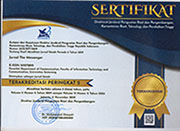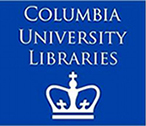Discourse Analysis of Politicians Social Media Posts
Abstract
Keywords
Full Text:
PDFReferences
Abdillah, L. A. (2014). Indonesian s Presidential Social Media Campaigns. In Seminar Nasional Sistem Informasi Indonesia. Surabaya: ITS. Retrieved from https://arxiv.org/abs/1409.8372
APJII. (2018). Infografis Penetrasi & Perilaku Pengguna Internet Indonesia: Survey 2017. Jakarta. Retrieved from https://cdn-report.dailysocial.id/Laporan_Survei_APJII_v1_3.pdf
Eriyanto. (2001). Analisis Wacana: Pengantar Analisis Teks Media. Yogyakarta: LKiS.
Firmansyah, & Irwansyah. (2017). Elaboration of Type of Celebrity Political Message in Social Media Microblogging: Content Analysis Study of Bandung Major. In 2017 Conference Proceedings of Indonesia International Graduate Conference on Communication (IndoIGCC) (pp. 1356 1372). Depok: Departemen Ilmu Komunikasi FISIP Universitas Indonesia. Retrieved from http://proceeding.indo-igcc.id/index.php/IndoIGCC/article/view/84/85
Gradinaru, C. (2014). Online Identity as a Narrative Project. International Journal of Communication Research, 4(3).
Haryatmoko. (2016). Critical Discourse Analysis. Jakarta: Rajawali Press.
Ihsanuddin. (2018). Tiket Gratis dari SBY untuk Prabowo... Retrieved July 30, 2018, from https://nasional.kompas.com/read/2018/07/31/09413711/tiket-gratis-dari-sby-untuk-prabowo
Indonesia-investments. (2017). Penduduk Indonesia. Retrieved February 24, 2018, from https://www.indonesia-investments.com/id/budaya/penduduk/item67
McAllister, I. (2007). The Personalization of Politics. In R. J. Dalton & H. Klingemann (Eds.), The Oxford Handbook of Political Behavior (1st ed.). Oxford: Oxford University Press. https://doi.org/10.1093/oxfordhb/9780199270125.003.0030
Nasrullah, & Mardhiah, D. (2013). The Discourse of Eid 1429AH/2011AD Greetings on the Banners and Billboards in Padang City. Al Albab Borneo Journal of Religious Studies (BJRS), 2(2).
Novianti, E., Budiono, A., & Rusmana, A. (2016). Analisis Isi Pola Penyampaian Pesan Informatif Wali Kota Bandung pada Akun Twitter @ridwankamil. In Prosiding Seminar Nasional Komunikasi 2016. Bandar Lampung: Program Studi Ilmu Komunikasi FISIP Universitas Lampung. Retrieved from http://jurnal.fisip.unila.ac.id/index.php/prosidingkom/article/view/282
Nugraheny, D. E. (2017). Demokrat: Wacana Duetkan Prabowo-AHY di Pilpres Masih Jauh. Retrieved August 2, 2017, from https://www.republika.co.id/berita/nasional/politik/17/08/02/ou2bma361-demokrat-wacana-duetkan-prabowoahy-di-pilpres-masih-jauh
Street, J. (2004). Celebrity Politicians: Popular Culture and Political Representation. The British Journal of Politics and International Relations, 6(4), 435 452. https://doi.org/https://doi.org/10.1111/j.1467-856X.2004.00149.x
DOI: http://dx.doi.org/10.26623/themessenger.v10i2.792
Refbacks
- There are currently no refbacks.
Copyright (c) 2018 Jurnal The Messenger
View My Stats [Jurnal The Messenger] is an International Scientific Journal, Published by the Department of Communication, Faculty of Information Technology and Communication, Universitas Semarang (Central Java, Indonesia). It is licensed under a Creative Commons Attribution 4.0 International License.



_11.jpg)




_BARCODE.jpg)
_BARCODE1.jpg)


5.png)










2.png)





